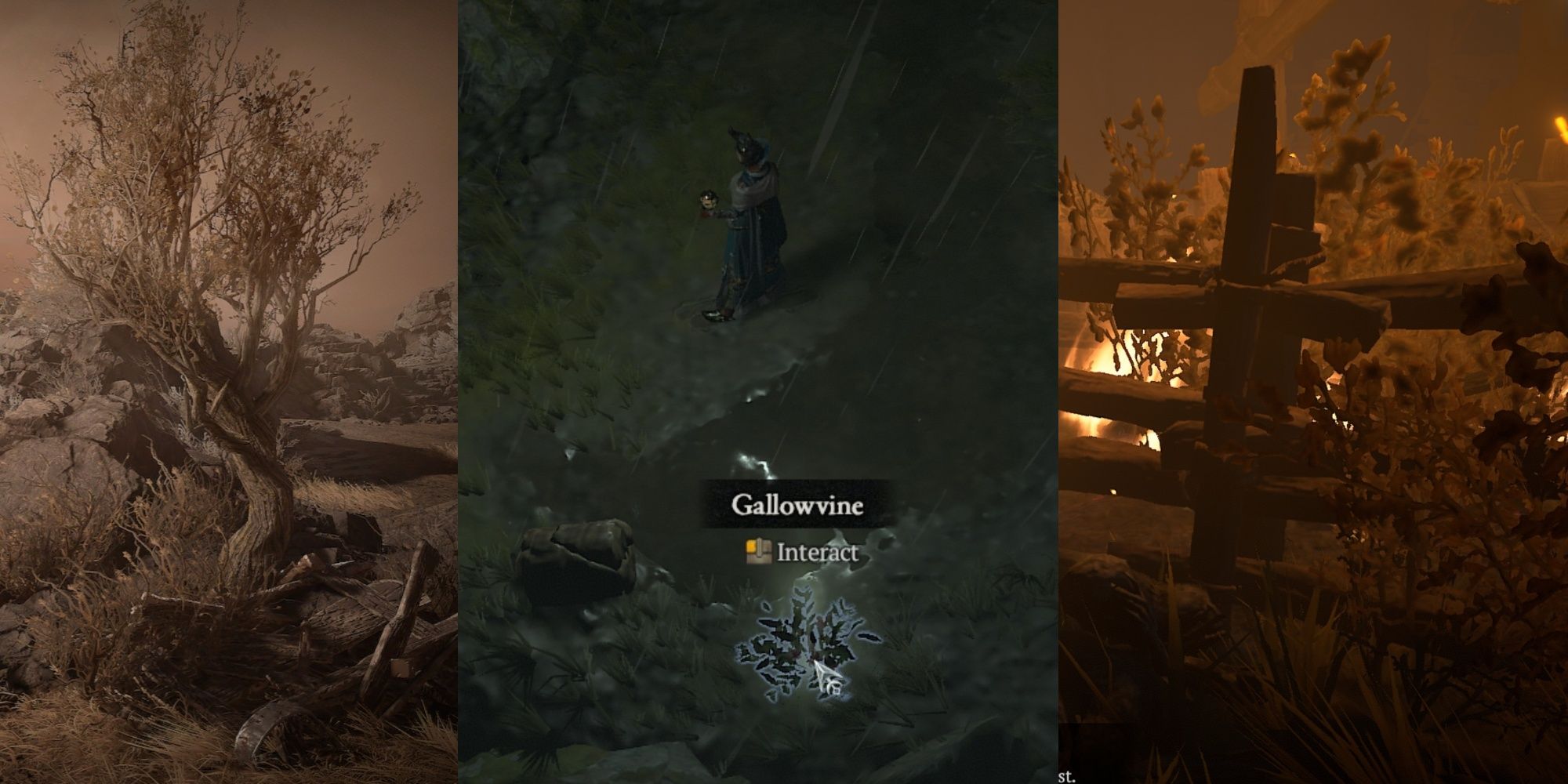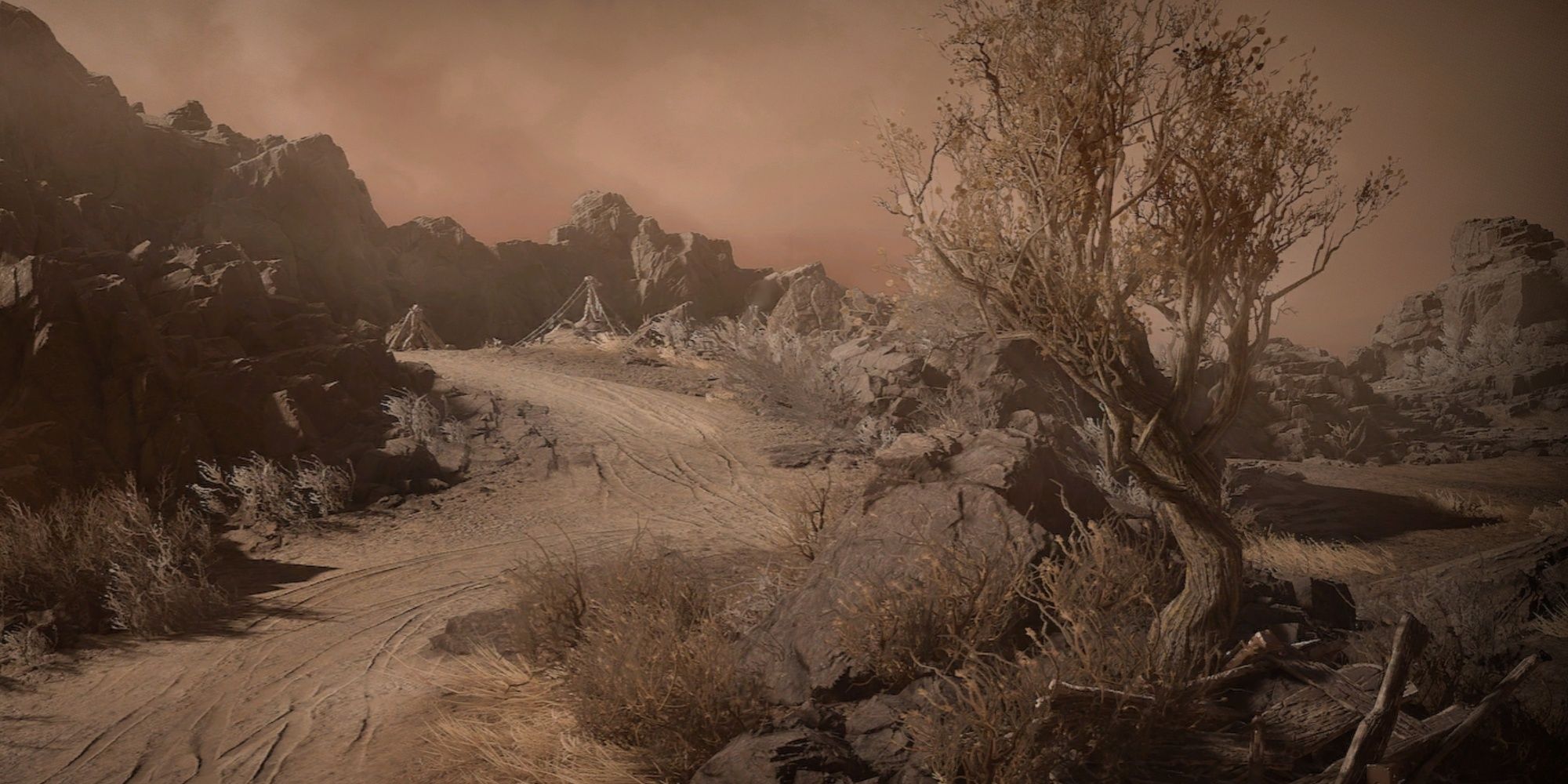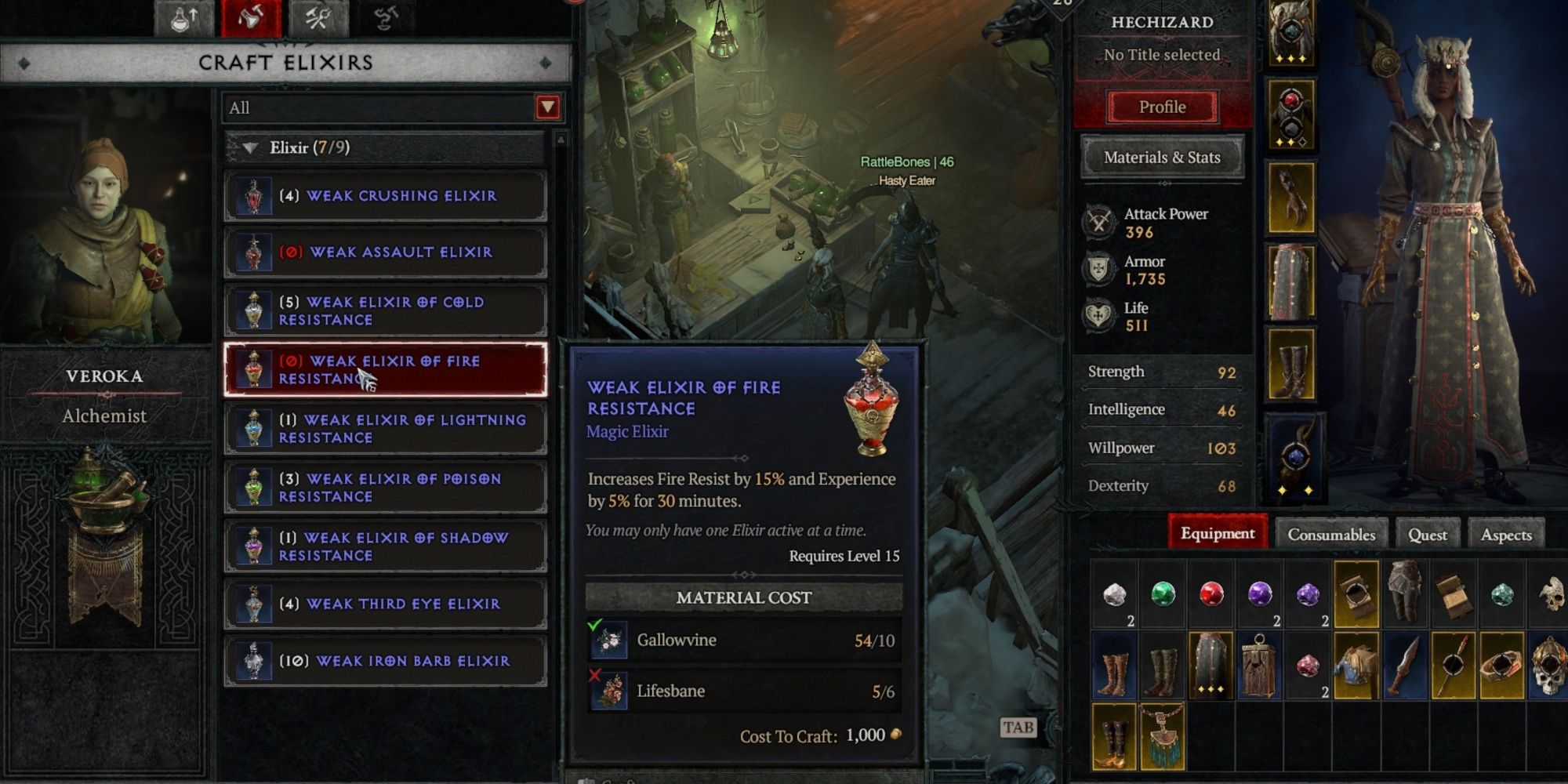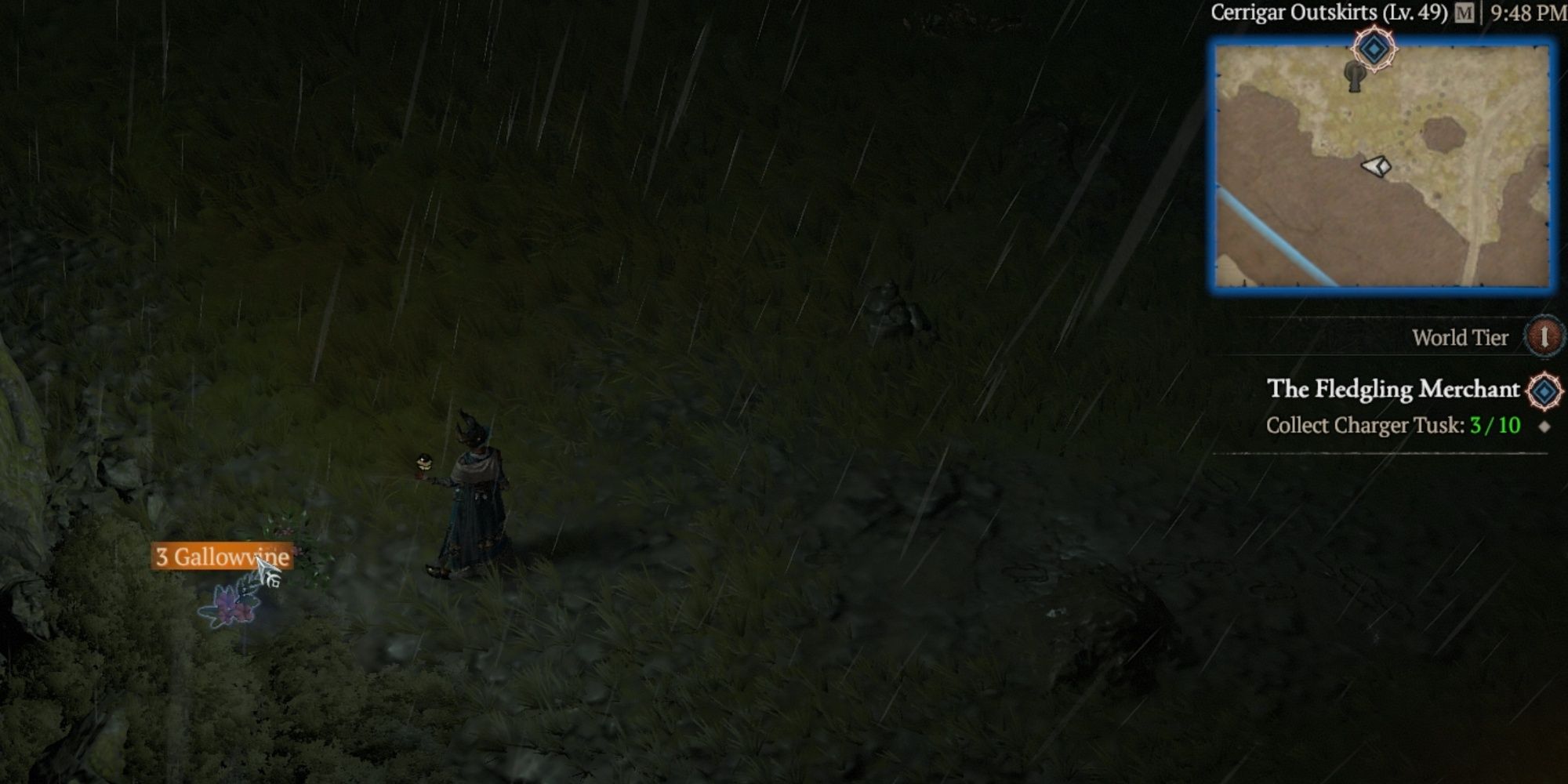Herb farming is something that players see in a lot of games, and now the Diablo franchise has it too. Diablo 4, the latest installment in one of gaming's most beloved and gory franchises, now compels characters to gather flowers in their spare time.
One of the first resources that players encounter in Diablo 4 is Gallowvine, and there's a reason it's so plentiful. However, it's not part of a herbalism power, a gardening profession, or a cooking skill that players have to learn at a trainer and grind using certain materials or ingredients. Players should take some extra time out of their busy slaying schedule and find this common herb, which can be used in its raw form or refined for other uses.
Why Farm Gallowvine?
Gallowvine is one of the basic building blocks of a variety of items in Diablo 4. In its raw form, it can be used to make weak elixirs and health potion upgrades. Elixirs might be optional, although they are highly recommended, but health potions are essential to the game and it takes both gold and Gallowvine to upgrade them at lower levels.
Even if players think they have enough Gallowvine already, since it is plentiful in the wilderness and no skill or training is required to pick it up, it's important to collect more. It can also be refined into other plants and herbs that might be required for upgrading gear or making more advanced potions to complement that perfect overpowered build.
Players don't have to clutter their inventory with herbs if they want to go farming in Diablo 4. Resources like Gallowvine are kept in a certain category called Resources, which can be found in the Character UI on the top left. This is essentially bottomless, so players are free to pick up as much as they can find.
Uses of Gallowvine
There might be resources to be farmed in Diablo, but as of yet, no professions have been added to the game, which means players have to go to an NPC to do the crafting work. In this case, it's the Alchemist who can either refine them into another material or make something else out of them. These services cost gold as well as Gallowvine.
The Alchemist
- Refining. Gallowvine itself isn't one of the materials used for Upgrades, but it can be refined into resources that can. It can also be used to make other herbs if specific ingredients are needed for potions or incense.
- Potions and Elixirs. The main reason that players visit the Alchemist, other than to upgrade their health potions, and a variety of herbs are required for this process in addition to Gallowvine. However, it's a main ingredient in virtually all of them.
- Incense. A perk that's designed for group play, Incense is used to give every character in the party a particular buff or bonus, like extra armor or better critical strike chance.
- Health Potion Upgrades. It seems strange that the Alchemist would do this as opposed to the Healer, but that's just the way the game is designed. It costs gold along with some specific materials, including Gallowvine, to upgrade health potions.
Every town has a Healer, but an Alchemist can only be found in big cities. Stockpile potions and elixirs when the Alchemist is available. It's easy to store potions and save them for later in the Consumables section of the character's inventory, which is reserved for any item that's destroyed or disappears when used.
Where To Farm Gallowvine
This humble herb spawns in various places throughout Sanctuary, but it seems to prefer temperate plains and dry, cool hillsides as opposed to swamps or deserts.
- Gallowvine Nodes. It might be easier to find these small, glowing bushes at night or in showy regions where they show up against the dark background. Each node commonly yields two or three Gallowvine.
- Refining. If the Gallowvine storage is empty and the player needs some, it can be made from other herbs at the Alchemist. Blightshade, Biteberry, Lifesbane, Howler Moss, and Reedamine can all be refined into Gallowvine.
- Dead Bodies. It doesn't happen often, but villagers or travelers who have come to a tragic end in the wilderness might be carrying Gallowvine, which can be looted from their corpses.
- Herb Caches. Rewards from quests often include caches of resources, and many of these consist of herbs. A Plea for Aid, a side quest that players can find in Firebreak Manor, includes a Herb Cache as one of the rewards.
- Cellars and Dungeons. Gallowvine isn't often found underground, but not all of the dungeons and cellars in Sanctuary are mines or basements. Abandoned homes, bandit camps, and hunter's cabins could have some.
- Chests, Lockboxes, and Crates. Any container sitting along the side of the road, from cairns to pottery, might contain Gallowvine. If the character is out adventuring anyway, it's worth a look.
Players who already have mounts can search for Gallowvine as they gallop throughout the countryside and loot it from horseback. However, they still have to come to a complete stop in order to do this.
Diablo 4 is available on PC, PlayStation 4, Xbox One, PlayStation 5, and Xbox Series X/S.




